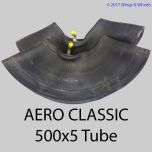TOST Gasket Set
TOST Master Cylinder 3/4 & 6/7 Gasket Set
General Description
TOST Master Cylinder 3/4 & 6/7 Gasket Set - are suitable for many different installation situations. Due to the integrated actuation lever a remarkable enhancement of the actuation force is realized, whereby very high braking pressures can be generated. The solid design together with high-quality sealings ensures long service intervals.
W&W typically stocks Master Cylinder 3/4 & 6/7 Gasket Sets.
Always use TOST Tires and Tubes when available.
See "Tech Data" tab for Description, Application and Technical Data.
See "Docs" tab for "TOST Tire, Tube & Wheel Selection Guide".
TOST Master Cylinder 3/4 & 6/7 price varies depending on selection above.


Installation guidelines for master cylinders Model 3, 4 and 7:
- The master cylinder must be installed in the specified position, maximum deviation 5°, ascending in direction of flight.
- The available brake lever travel must allow for the necessary piston stroke.
- The active stroke of the master cylinder piston must not be exceeded. The brake lever travel must therefore be restricted in both directions (Be careful not to damage the piston collars).
- There must be play of 1 mm between piston and brake lever in release position.
- The brake lever must be pulled back to release position by a return spring. The spring must be attached to a fixed structural element.
- The mounting bracket for the master cylinder must not yield when the brake is activated.
Important note:
Brake fluid DOT4 is strongly hygroscopic, i.e., it absorbs water. This is the reason why old brake fluid has a corrosive effect. Replace brake fluid DOT4 once a year according to manufacturer’s maintenance manual.
Master cylinder are the components in a hydraulic brake system, that produce the necessary brake respectively hydraulic pressure to push the brake linings against the brake disk. In addition to our brake assemblies, we manufacture a wide variety of master cylinders, available from stock, which can be used in different combinations. In general, three types of master cylinder can be classified:
- Hydraulic brake lever, which can be mounted directly to the control stick. The actuation is carried out directly by the pilot.e.g.: HBG, HBGD, HBGSH
- Rudder pedal master cylinder, which can be mounted to additional small pedals on the rudder pedals or at a user-defined place in the fuselage. If the installation is not realized at the rudder pedals, the actuation has to be realized with a bow- den cable or push-rods. e.g.: PHBZ, 10-30
- Universal master cylinder for user-defined installation in the fuselage. The actuation has to be realized with a bowden cable or push-rods. e.g.: Form 7













